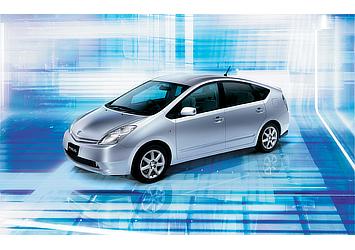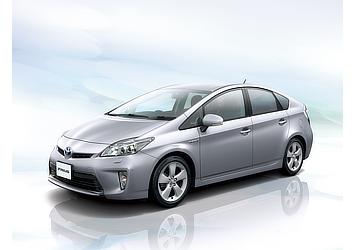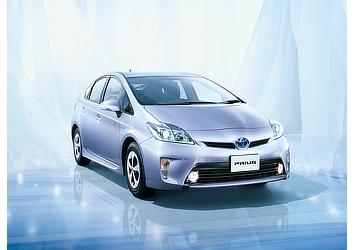Jul. 03, 2013
Worldwide 'Prius' Sales Top 3-Million Mark
Over 790 Billion Yen*1 to be Spent on R&D for Ever-better Cars
Toyota City, Japan, July 3, 2013―Toyota Motor Corporation (TMC) announces that as of the end of June, worldwide cumulative sales of the "Prius" gasoline-electric hybrid vehicle passed the 3-million mark*2.
In 1997, TMC launched the Prius, which was the world's first mass-produced hybrid passenger car. The second generation followed in 2003, and the third generation in 2009. From the first to third generation, TMC greatly reduced the cost of the hybrid system by two-thirds and increased fuel efficiency from 28 km/L to 38 km/L*3. In addition, TMC applied for 1,261 patents relating to the third-generation Prius, achieving progress worthy of the Prius name (derived from a Latin word meaning "to go before").
Since the development of the first-generation Prius, TMC has positioned hybrid technology as a core technology required for the development of various types of environment-friendly vehicles and has placed emphasis on the development and production of core components such as motors, inverters, batteries and electronic control units (ECUs), giving rise to substantial investment in Japan.
TMC will continue to conduct R&D and invest in facilities in Japan for the development of hybrid and other cutting-edge technologies and achieve sustainable growth by deploying these Japan-developed technologies across the globe.
In the fiscal year ending March 2014, TMC expects to spend a consolidated 890 billion yen*4 (790 billion yen*5 unconsolidated) on environmental technology development, as well as on strengthening new platform and major component development.
In the same period, TMC also plans to make consolidated capital expenditure investments of 910 billion yen (up seven percent year-on-year), with 440 billion yen invested in Japan (up nine percent year-on-year).
Investments in R&D infrastructure include a new R&D facility (651 hectares) and the Powertrain Development and Production Engineering Building (a 12-story structure with a total floor area of 100,000 m2) in Toyota City, Aichi Prefecture, that will serve as a next-generation powertrain development base, as well as the Aerodynamics Laboratory (capable of producing winds of 250 km/h) located in the Honsha Technical Center.
Future capital investments by consolidated subsidiaries include an investment by Primearth EV Energy Co., Ltd. (PEVE) for expanding battery production capacity at its Omori Plant in Kosai City, Shizuoka Prefecture.
| Toyota Prius Sales(based on TMC data) | (Unit = 1 vehicle) |
| First Generation (Dec.1997-Aug. 2003) |
Second Generation (Sep. 2003-Dec. 2011*1) |
Third Generation*2 (Since May 2009) |
Cumulative Total (Dec. 1997-May 2013) |
|||
| Total | 123,000 | 1,192,000 | 1,688,000 | 3,002,000*3 | ||
| Japan | 65,000 | 360,000 | 899,000 | 1,325,000 | ||
| Outside Japan | 57,000 | 831,000 | 788,000 | 1,677,000*3 | ||
| North America | 52,000 | 683,000 | 600,000 | 1,335,000*3 | ||
| Europe | 4,000 | 123,000 | 134,000 | 262,000 | ||
| Other | 500 | 24,000 | 53,000 | 79,000 | ||
| *1With the launch in Japan of the third-generation Prius in May 2009, the second-generation Prius was sold as the "Prius EX". Production ended in December 2011; *2Prius only (not including the "Prius α/ Prius v / Prius +", "Aqua / Prius c" or the "Prius PHV"); *3Sum of cumulative total through the end of May 2013 and June sales volume in the United States. | ||||||
2Based on TMC data
3Measured using the 10-15 test cycle of the Japanese Ministry of Land, Infrastructure, Transport and Tourism
4Up 10 percent year-on-year
5Up 11 percent year-on-year









